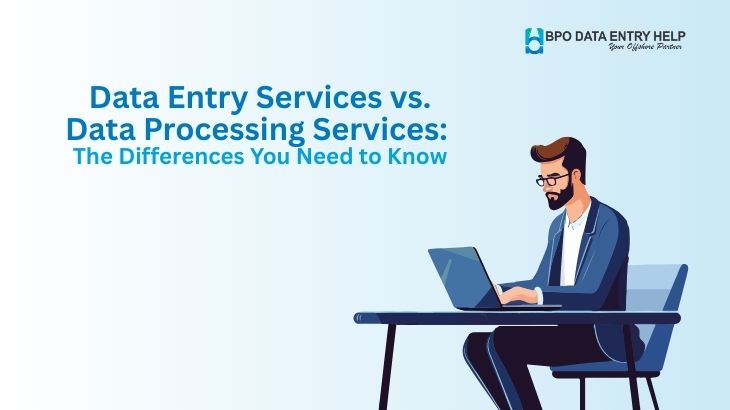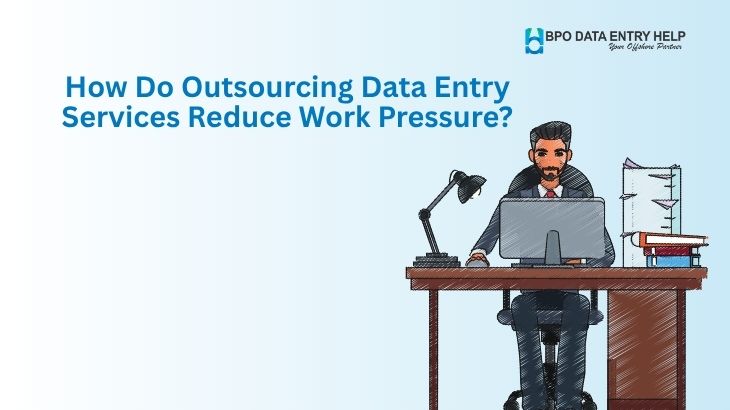Best practices for effective data entry: Tips for businesses
Uploading data from various sources to a centralized server-based or cloud-based database is one of the major operations most businesses have to invest in. It not only requires a proper skillset but also needs an in-depth understanding of data entry tools and domain knowledge. Despite having all these, businesses struggle with implementing an efficient data entry workflow, thereby leading to severe consequences due to unwanted discrepancies, corruption, and exposure to vulnerabilities.
With this being said, we have illustrated a few tips for streamlining the data entry process and making the business more efficient and productive.

Identifying the usefulness of collected data
First of all, businesses should understand that all datasets gathered from multiple channels aren’t relevant for the concerned purpose. For instance, customer information like addresses, postal codes, and other such contact details will be suitable for order processing and logistics but not for inventory management or financial planning. Besides, when data is sourced from various channels, it contains several duplicate and corrupted records, which if not handled can lead to severe consequences. So, it’s important to identify the correct data for the concerned purpose and accordingly apply sorting and filtering logics.
Error analysis should be done properly
Since the raw data will be full of errors, businesses offering data entry services need to implement appropriate error analysis techniques. Usually, the two most common forms of error analysis are:
- Event analysis: Check the root cause of an event that occurred due to corrupted or erroneous data and take appropriate actions to prevent the recurrence of the event.
- Cluster analysis: Here, you will be responsible for identifying data groups with similarities and finding the errors in them rather than focusing on the entire data range.
Standardizing the data entry process
If you want the BPO data entry help service to be of optimal quality, standardizing the workflow is the most feasible option. In other words, you should define the technology stack properly based on the customer requirements, business goals and objectives, and the data to be handled. Also, you need to decide the steps of the data entry process and adhere to the roadmap throughout to avoid any discrepancy caused by deviation. Standardizing the process will help your technical team follow a proper roadmap and eliminate mistakes during data entry.
Implementing automated work routines
Handling big data in the raw form manually is a cumbersome task, one that can easily introduce unwanted errors and discrepancies. Hence, for an effective data entry process, you should focus on automating a few intermediate workflows. For instance, the identification of datasets and grouping them can be done through AI-based data segmentation software. Similarly, algorithms can help set different conditions for data validation and review during and after the uploading process. If the data entry project involves system migration, you can automate the routines through DevOps logic and prevent human errors in the process.
Checking data quality and setting validation standards
One of the best ways in which you can ensure accuracy and precision in the data entry procedure is by defining the quality check parameters and the validation standards. For instance, you should decide the parameters against which the quality of the entered data needs to be analyzed. Setting KPIs beforehand will help you determine if the QA results are at par with your client’s needs or not. If not, further modifications can be made until the desired results are achieved. Also, you should set validations for checking the datasets so that the restrictions can be properly followed and the discrepancies can be identified on time.
Implementing emergency patching schedules
While uploading data or migrating records from one system to another, discrepancies can be introduced due to incorrect routines and logic. Sometimes, you have to deal with incorrect data in the live server. for such scenarios, it’s best to prepare emergency patching activities so that the records can be corrected without causing business disruptions.
Conclusion
In this article, we have explained some of the best data entry tips for business that you can follow to achieve optimal quality and live up to your service commitment. Apart from the above-mentioned techniques, you should also pay attention to the tech stack being used. After all, data accuracy and state can be maintained only when you use state-of-the-art technology with efficient output generating capacity.
Recent Post


November 24, 2025

November 10, 2025

October 29, 2025

October 10, 2025
